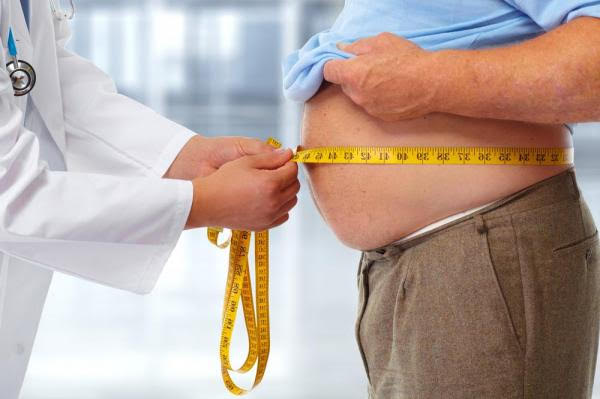 DD HEALTH: DONEGAL men with larger waistlines could be at higher risk of developing aggressive prostate cancer, a study has suggested.
DD HEALTH: DONEGAL men with larger waistlines could be at higher risk of developing aggressive prostate cancer, a study has suggested.
Research on 140,000 men from eight European countries found that a 4in (10cm) larger waist circumference could increase the chances of getting the cancer by 13%.
Men were most at risk when their waist was bigger than 37in (94cm), the University of Oxford study found.
In Ireland, prostate cancer is the second most common cancer in men, after skin cancer.
The study, which was presented at the European Obesity Summit in Gothenburg, Sweden, looked at the association between body measurements in men in their 50s and prostate cancer risk over 14 years.
In that time, there were about 7,000 cases of prostate cancer, of which 934 were fatal.
The researchers found that men with a higher body mass index (BMI) and waist circumference had an increased risk of high grade prostate cancer, an aggressive form of the disease.
For example, men with a waist size of 37in (94cm) had a 13% higher risk of aggressive prostate cancer than men with a waist of 33in (84cm).
Scientists also observed a higher risk of dying from prostate cancer with increased BMI and increased waist circumference.
Fourteen years later, there were just over 7,000 incidents of prostate cancer, 934 of which were fatal. The scientists concentrated on aggressive prostate cancers and those which resulted in death.
Every extra 5 kg/m2 in BMI increased the risk of aggressive disease by 10 per cent, with a 14 per cent higher risk for fatal prostate cancer.
Study author Dr Aurora Perez-Cornago, of Oxford University, said: “It is really important for health to men to try and maintain a healthy weight, this study shows a clear reason why.”
She said the extra weight on the waist appeared to have an impact on hormones which fuel prostate disease, and affect the metabolism.
“The findings from this large prospective study show that the association between body size and prostate cancer is complex and varies by disease aggressiveness; men who have greater adiposity have an elevated risk of high grade prostate cancer and prostate cancer death.”
* What is prostate cancer?
The prostate is a gland located immediately below the bladder, in front of the bowels. It produces fluid that protects and enriches sperm.
Prostate cancer occurs when some of the cells in the prostate reproduce far more rapidly than normal, resulting in a tumour. If left untreated, prostate cancer cells may eventually spread from the prostate and invade distant parts of the body, particularly the lymph nodes and bones, producing secondary tumours in a process known as metastasis.
One of the most worrying aspects of the disease is that most prostate cancers develop without men experiencing any symptoms in the early stages.
Know the risk factors
Prostate cancer only affects men, as women do not have a prostate gland. Risk factors in developing the disease include:
Age
The older a man, the more likely he is to be diagnosed with prostate cancer.
Family History
A man with a father or brother who developed prostate cancer is twice as likely to develop the disease.
Ethnicity
Increased occurrence in black African and Afro-Caribbean males.
Symptoms, testing and treatment
The symptoms
Not everyone experiences symptoms of prostate cancer. Many times, signs of prostate cancer are first detected by a doctor during a routine check-up.
Some men, however, will experience changes in urinary or sexual function that might indicate the presence of prostate cancer. These symptoms include:
A need to urinate frequently, especially at night
Difficulty starting urination or holding back urine
Weak or interrupted flow of urine
Painful or burning urination
Difficulty in having an erection
Painful ejaculation
Blood in urine or semen
Frequent pain or stiffness in the lower back, hips, or upper thighs.
Tags:







